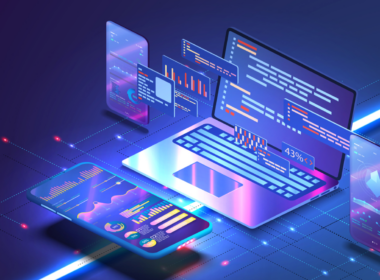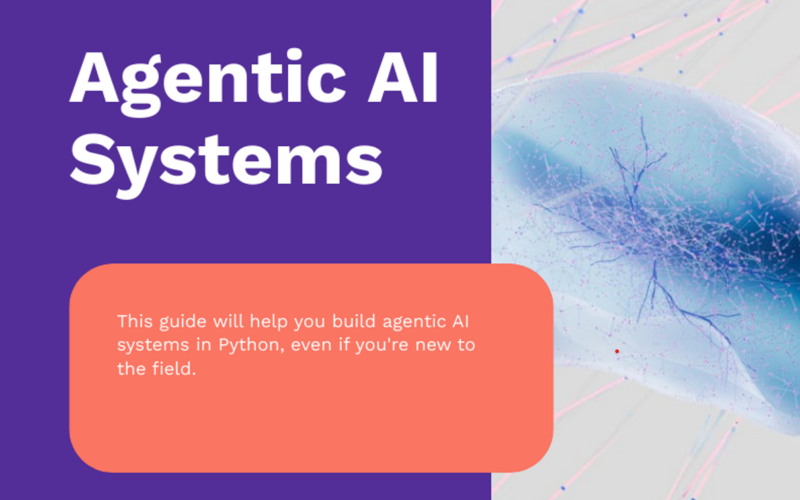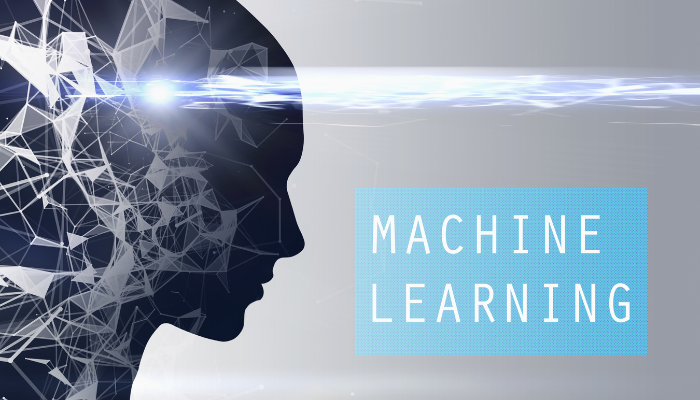If you’ve ever wanted to build an AI system that doesn’t just follow commands but takes action on its own, you’re in the right place. In the world of artificial intelligence, this type of system is called Agentic AI. Agentic AI goes beyond simple task automation; it’s about creating intelligent agents that can think, decide, and act independently, learning from their environment as they go.
Python is the perfect language for building these kinds of AI systems. With its simple syntax and powerful libraries like TensorFlow, PyTorch, and OpenAI Gym, Python allows you to develop AI agents that can learn from experience, make decisions, and improve over time without constant human input.
In this guide, we’ll walk through the basics of building your own agentic AI system in Python. Let’s break it down and see how you can create intelligent agents that make decisions, learn from data, and get smarter with every interaction.
Let’s begin with the basics!
What is Agentic AI?
Agentic AI is a type of artificial intelligence that goes beyond just responding to commands—it makes independent decisions based on data and its environment. Imagine it as an AI system that can automate tasks, adjust its behavior, and take action without needing step-by-step instructions.
For example, in retail, agentic AI can automatically adjust prices in real-time based on competitor pricing, customer demand, and inventory levels. It learns from this data and optimizes itself to make smarter decisions—like knowing when to increase stock of a high-demand product or suggest relevant items to a shopper based on their past behavior.
Unlike traditional AI, which requires human oversight to function, agentic AI can predict, act, and improve its operations autonomously, making it a powerful tool for businesses that want to scale efficiently and stay ahead in competitive markets.
Agentic AI Stats That Will Blow Your Mind!
Still wondering if AI agents are truly the future? Check out these mind-blowing stats that show just how much AI is already shaping industries:
- 50% of companies currently using generative AI models will launch agentic AI pilots or proof of concepts by 2027.
- 33% of enterprise software applications will include agentic AI by 2028.
- 1 billion AI agents are expected to be in use by 2026. (Marc Benioff, Salesforce)
- 80% of customer service issues will be resolved by AI agents without human intervention by 2029.
- 64% of respondents believe that agentic AI will improve customer service outcomes.
- 75% of software engineers will use agentic AI coding assistants by 2028.
- 15% of workplace decisions will be made using agentic AI by 2028.
- $150 billion could be saved in the US healthcare sector by 2026 through agentic AI applications.
- Global spending on AI will reach $632 billion by 2028, with a focus on agentic AI.
- Agentic AI is expected to drive about 3.5% of global GDP by 2030.
With all these impressive stats in mind, it’s no wonder that AI agents are making waves across industries. But what exactly makes these agents so powerful?
Let’s get into the key characteristics that define agentic AI and make it so effective in shaping the future of business and customer interactions.
Key Characteristics of AI Agents
AI agents are more than just programs running on a computer—they’re designed to be dynamic, adaptive, and efficient in solving real-world problems. Here are the core characteristics that make AI agents so effective:
- Autonomy: AI agents can operate independently, making decisions based on available data without requiring constant human intervention. This means they can take actions on their own—like updating stock levels or adjusting prices—without needing to wait for manual input.
- Learning and Adaptability: One of the most powerful traits of AI agents is their ability to learn from data and experiences. Over time, they become smarter, adjusting their actions and decisions based on new information, customer behavior, and market trends.
- Goal-Oriented: AI agents are designed with specific objectives in mind. Whether it’s increasing sales, enhancing customer experience, or improving operational efficiency, AI agents work towards achieving these goals with minimal human oversight.
- Interactivity: AI agents can engage with users, customers, or other systems, collecting information and responding in real-time. This interaction makes them a key component in customer service, personalized shopping experiences, and real-time decision-making.
- Autonomous Communication: Many AI agents can communicate with other systems and agents, creating a network of decision-making units that work together. For example, AI agents can update inventory systems, sync with pricing tools, or communicate with CRM platforms to ensure everything runs smoothly.
These characteristics allow AI agents to act like efficient, adaptable employees who never stop learning and improving, making them incredibly valuable in industries like retail and e-commerce.
Now that we’ve explored the exciting capabilities of AI agents, let’s get down to the nitty-gritty of why Python is the go-to language for building these intelligent, self-learning systems.
Why Python is Perfect for Building Agentic AI Systems
Python is widely considered the go-to language for AI development—and for good reason. Here’s why it’s perfect for building agentic AI systems:
- Simple and Readable Syntax: Python’s clean, easy-to-read syntax makes it beginner-friendly and quick to work with, especially when you’re developing complex AI systems. Whether you’re building a simple chatbot or a multi-agent system, Python’s readability keeps things straightforward.
- Rich Ecosystem of Libraries: From machine learning frameworks like TensorFlow and PyTorch to natural language processing tools like NLTK and SpaCy, Python’s vast library ecosystem lets you build powerful AI agents quickly. You don’t have to reinvent the wheel; just plug in the right tools and get to work.
Also Read: Top Python AI and Machine Learning Libraries
- Scalability and Flexibility: Python is highly scalable, meaning it’s just as effective for small-scale prototypes as it is for large-scale AI systems. Plus, its flexibility lets you experiment with different frameworks, libraries, and tools until you find the perfect combination for your agentic AI needs.
- Active Community and Support: Python’s large and active community means you’re never alone. Whether you’re facing an issue or need guidance, you’ll find plenty of forums, tutorials, and expert support to help you along the way.
- Integration with Other Technologies: Python plays well with other programming languages and technologies, allowing you to integrate your agentic AI system with existing tools, databases, and platforms seamlessly.
Also Read: Top Open Source Chatbot Frameworks to Use
Let’s take a look at how you can create your first agentic AI system. It’s easier than you think, and with Python as your tool, you’ll be able to follow these straightforward steps to get started:
Building Your First Agentic AI System: Step by Step
Ready to build your very own AI agent? In this section, we’ll walk you through the simple steps to create an intelligent system that can think, learn, and act on its own.
From setting up Python to training your model, we’ll show you how to make your AI agent smarter and more efficient with every step.
Let’s get started!
Step 1: Set Up Your Python Environment
To begin building an agentic AI system, the first step is setting up a clean and organized Python environment. This ensures you have the right tools and libraries ready for your project. Python’s simplicity makes it an ideal language for AI development.
- Install Python and Virtual Environment:
- Ensure you have the latest version of Python installed.
- Use virtualenv or conda to create a virtual environment to isolate your project’s dependencies.
- Install Key Libraries:
- Install essential libraries such as numpy, pandas, matplotlib for data processing and visualization.
- Depending on the type of AI agent you’re building, install machine learning libraries like TensorFlow, PyTorch, or scikit-learn.
Step 2: Define Your AI Agent’s Purpose
Before you start coding, it’s important to define the purpose of your agent. What problem do you want it to solve? Is it a reactive agent, a learning agent, or something in between?
- Decide the Type of Agent:
- Reactive agents: Respond to immediate inputs but don’t learn from them.
- Learning agents: Learn from data and improve over time.
- Hybrid agents: A combination of both reactive and learning agents, adapting to situations as they unfold.
- Set Clear Goals:
- Do you want your agent to assist customers in real-time? Recommend products based on user behavior? Manage inventory autonomously? Define the clear problem your agent will solve.
Step 3: Collect and Prepare Data
Data is the foundation of any AI system, including agentic AI. The more relevant and high-quality your data, the better your agent will perform.
- Collect Relevant Data:
- Depending on your AI’s task, gather data such as customer behaviors, transaction histories, preferences, etc.
- Depending on your AI’s task, gather data such as customer behaviors, transaction histories, preferences, etc.
- Data Cleaning:
- Clean the data by handling missing values, removing duplicates, and formatting it for easy processing.
- Clean the data by handling missing values, removing duplicates, and formatting it for easy processing.
- Data Labeling:
- If you are building a learning agent, label the data for supervised learning models, or ensure it’s properly prepared for unsupervised learning.
Step 4: Train Your AI Model
Training is the core of developing an AI agent. In this step, the agent learns to perform tasks based on the data you’ve provided.
- Choose a Machine Learning Model:
- Select the appropriate machine learning algorithm based on your agent’s needs. For example, decision trees, reinforcement learning, or neural networks.
- Select the appropriate machine learning algorithm based on your agent’s needs. For example, decision trees, reinforcement learning, or neural networks.
- Train the Model:
- Feed the data into your model and allow it to learn patterns. Adjust hyperparameters to improve performance.
- Feed the data into your model and allow it to learn patterns. Adjust hyperparameters to improve performance.
- Validate the Model:
- Split the data into training and testing sets to evaluate your model’s accuracy and make adjustments.
Step 5: Integrate Your AI Agent into Your Application
Now that your AI agent is trained, it’s time to integrate it into your application or service. Whether it’s a chatbot or a recommendation system, integration is key to delivering value.
- Build a User Interface (UI):
- Create an intuitive UI for users to interact with your AI agent. For chatbots, ensure the conversation flow feels natural and helpful.
- Create an intuitive UI for users to interact with your AI agent. For chatbots, ensure the conversation flow feels natural and helpful.
- Connect the AI Model to Your Application:
- Use APIs or direct integration to connect your trained AI model to the application where users will interact with it.
- Use APIs or direct integration to connect your trained AI model to the application where users will interact with it.
- Test Interaction:
- Ensure that the agent responds correctly and provides relevant suggestions or actions based on user input.
Step 6: Test and Improve
Testing is a critical part of building any AI system. You need to ensure that your agent performs well across a variety of scenarios.
- Test in Different Environments:
- Run tests to see how your AI agent performs with different types of data, user inputs, or interactions.
- Run tests to see how your AI agent performs with different types of data, user inputs, or interactions.
- Monitor and Evaluate:
- Continuously evaluate its performance and make tweaks based on real-world data.
- Continuously evaluate its performance and make tweaks based on real-world data.
- Improve with Feedback:
- Gather feedback from real users and use it to improve the AI’s behavior. This could involve fine-tuning the model, adjusting its parameters, or adding new features.
Step 7: Deploy and Monitor Your AI Agent
Once your AI agent is working smoothly, it’s time to deploy it and monitor its performance in real-time.
- Deploy to Production:
- Launch your agent into the live environment, ensuring that it’s scalable and can handle the volume of interactions expected.
- Launch your agent into the live environment, ensuring that it’s scalable and can handle the volume of interactions expected.
- Real-Time Monitoring:
- Use tools to monitor the performance of your AI agent, tracking metrics like response time, accuracy, and user satisfaction.
- Use tools to monitor the performance of your AI agent, tracking metrics like response time, accuracy, and user satisfaction.
- Continual Updates:
- As new data comes in, periodically retrain and update the agent to ensure it continues to improve and perform at its best.
You’ve got the basics down—now let’s talk about where agentic AI is actually shaking things up. Spoiler: it’s everywhere, from healthcare to finance!
Applications of AI Agents in Various Fields
The global AI agents market size was estimated at USD 5.40 billion in 2024, with expectations to grow at a staggering CAGR of 45.8% from 2025 to 2030. This explosive growth highlights just how crucial AI agents are becoming in sectors like retail, e-commerce, and beyond.
So, how exactly are AI agents being used in the real world? Here’s a quick look at some areas where these intelligent systems are already making an impact:
- Retail and E-commerce: AI agents are all over online stores, handling tasks like suggesting products based on what customers have bought before, adjusting prices based on demand, or even helping recover abandoned shopping carts with personalized offers. They ensure a smooth experience for shoppers while also making the business more efficient.
- Healthcare: In healthcare, AI agents are used to track patient data, help with scheduling, and even assist in diagnosis. These agents can spot patterns in patient behavior, flag potential issues, and suggest treatment plans, making healthcare services quicker and more accurate.
- Finance: AI agents in finance are helping to spot fraud, assess risk, and give financial advice tailored to individual needs. By analyzing large sets of data, they provide quick insights that help businesses and individuals make smarter financial decisions.
- Customer Support: Many companies are using AI agents for customer service. These bots can answer common questions, troubleshoot problems, and help customers navigate services, all while reducing wait times and improving satisfaction.
- Manufacturing: In manufacturing, AI agents keep track of production lines, predict when machinery might break down, and suggest ways to improve efficiency. They monitor operations in real-time to make sure everything runs smoothly, saving time and money.
Want your AI to be more than just responsive? We’ll help you build proactive agentic AI in Python!
But, Building an AI Agent Comes with Its Challenges…
While the process of building an agentic AI system is exciting, it doesn’t come without its obstacles. Just like with any complex project, you’ll face challenges along the way.
Let’s take a look at some of the common hurdles you might run into:
Data Quality Issues
No matter how advanced your AI is, it’s only as good as the data you feed it. If your data is messy, incomplete, or inconsistent, your agent will struggle to learn and make accurate decisions. Imagine trying to teach an AI with incomplete information—it’s like trying to solve a puzzle without all the pieces!
Choosing the Right Model
There are a ton of machine learning models out there, and each has its strengths and weaknesses. The tricky part is picking the right one for your AI agent. You might need to try several models to find the best fit, which can be time-consuming. But don’t worry—this is part of the fun of building your system and finding what works!
Integrating with Existing Systems
Once your AI agent is up and running, the next challenge is making sure it communicates seamlessly with your other tools and systems. Whether it’s a CRM, inventory system, or payment gateway, integration can sometimes be a headache. But with the right APIs and proper setup, this doesn’t have to be a roadblock.
Scalability
Your AI agent might work great on a small scale, but what happens when you need it to handle thousands of transactions or analyze massive datasets? Scaling your agent to meet growing demands is an ongoing challenge. Make sure you plan for this from the start, and keep monitoring its performance as it grows.
Ready to scale your AI effortlessly?
With Codewave’s infrastructure development services, we ensure your AI grows smoothly without a hitch. From seamless cloud solutions to optimized systems, we build the foundation for your AI to handle increased tasks and data. Want to see our work? Visit our portfolio!
Ongoing Maintenance
AI agents need continuous updates and fine-tuning to stay sharp. The learning doesn’t stop once you deploy them—they need constant feedback to improve. This could mean updating training data, tweaking models, or adjusting decision-making processes. So, be ready for the long haul!
Even with challenges, building a successful agentic AI system is within reach. At Codewave, we specialize in overcoming these hurdles—whether it’s setting up AI infrastructure, integrating systems, or scaling your solution.
Deploy Your First Agent In 3 Days
When it comes to building and deploying Agentic AI systems, Codewave is the partner you need for a successful journey. Here’s why:
Power Your Business with Codewave’s Agentic AI Expertise
With over 400 successful projects under our belt, Codewave has the proven expertise to deliver powerful agentic AI solutions that drive real business impact. If you’re ready to tap into the potential of autonomous AI for your business, here’s why we’re the preferred choice for companies worldwide:
Full-Cycle AI Agent Development
We build a variety of agentic AI systems, including chatbots, learning agents, goal-based agents, autonomous systems, personalized AI assistants, and predictive agents. We use Machine Learning, Natural Language Processing (NLP), and Reinforcement Learning to create intelligent agents that learn, adapt, and take proactive actions.
Custom Agentic AI Development
We build AI agents to meet your business needs, from improving customer service to automating inventory management and personalizing shopping experiences. We use TensorFlow to build deep learning models, PyTorch for flexible neural networks, and Scikit-learn for machine learning algorithms, ensuring that the agents deliver results and continuously improve.
Seamless Integration with Existing Systems
We ensure that your AI system integrates smoothly with your CRM, ERP, and other platforms. Using REST APIs and GraphQL, we connect the AI system with your existing tools, and we automate workflows with Zapier to eliminate manual tasks and improve efficiency.
Scalability Built for Growth
We design AI solutions that grow with your business. By using Kubernetes for container orchestration, Docker for consistent environments, and AWS for cloud scalability, we make sure your AI system handles increasing data, transactions, and user interactions seamlessly.
Ongoing Monitoring and Improvement
We continuously monitor and improve your AI system’s performance. With Prometheus and Grafana, we track system health and performance in real-time. We use MLflow to manage model updates, ensuring that your AI system stays current and performs optimally.
Get Your Agentic AI Solution Up and Running Fast with Codewave
Codewave is a UX first design thinking & digital transformation services company, designing & engineering innovative mobile apps, cloud, & edge solutions.







